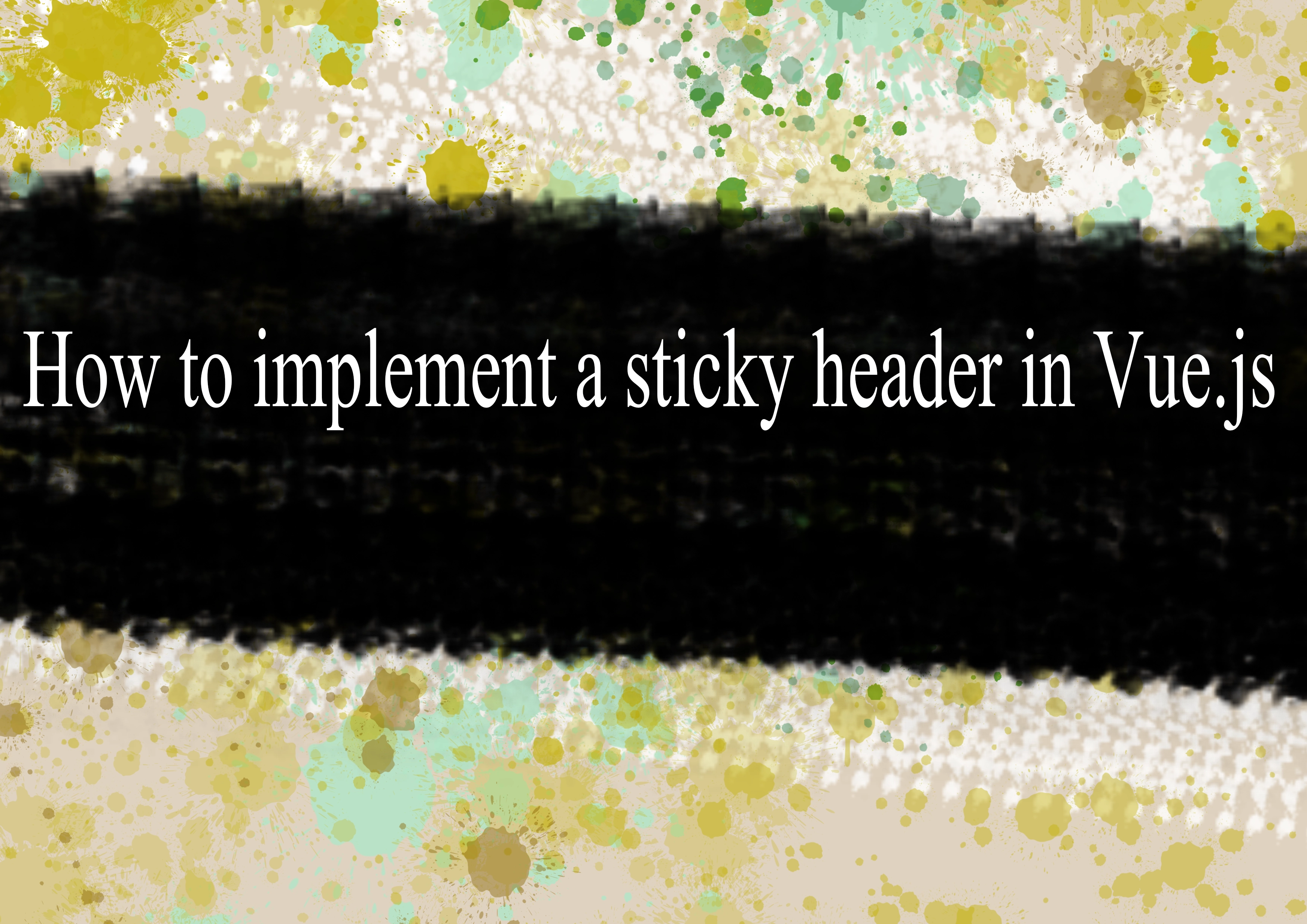How to implement a sticky header in Vue.js

Implementing a sticky header in Vue.js involves using a combination of CSS and Vue.js directives. Here's a step-by-step guide on how you can achieve this:
Create a new Vue component:
Create a new Vue component or use an existing one where you want to implement the sticky header.
vue<!-- StickyHeader.vue --> <template> <div> <!-- Your content goes here --> <div class="content"> <!-- Content of your component --> </div> <!-- Sticky header --> <div class="sticky-header" :class="{ 'is-sticky': isSticky }"> <!-- Your header content goes here --> </div> </div> </template> <script> export default { data() { return { isSticky: false, }; }, methods: { handleScroll() { // Implement the logic to determine if the header should be sticky // Update the 'isSticky' data property accordingly this.isSticky = window.scrollY > 100; // Adjust the scroll threshold as needed }, }, mounted() { // Attach the scroll event listener when the component is mounted window.addEventListener('scroll', this.handleScroll); }, beforeDestroy() { // Remove the scroll event listener before the component is destroyed window.removeEventListener('scroll', this.handleScroll); }, }; </script> <style scoped> .sticky-header { position: fixed; top: 0; left: 0; width: 100%; background-color: #fff; /* Set the background color of your sticky header */ z-index: 1000; /* Adjust the z-index as needed */ /* Add any other styling for your sticky header */ } .is-sticky { /* Add styles for the sticky state */ // For example, you can add a box-shadow or any other styles box-shadow: 0 2px 5px rgba(0, 0, 0, 0.1); } .content { /* Add padding or margin to your content to avoid overlap with the sticky header */ margin-top: 60px; /* Adjust this value based on the height of your sticky header */ } </style>In this example, the
isStickyproperty is used to determine whether the header should be in a sticky state or not. ThehandleScrollmethod is called on the window's scroll event, updating theisStickyproperty accordingly.Adjust the styles and logic according to your specific requirements and design.
Include the component:
Now, include this component in the parent component or page where you want to use the sticky header.
vue<!-- YourParentComponent.vue --> <template> <div> <!-- Other content of your parent component --> <StickyHeader /> </div> </template> <script> import StickyHeader from '@/path/to/StickyHeader.vue'; // Adjust the path accordingly export default { components: { StickyHeader, }, // Other component options... }; </script>Make sure to adjust the path to the
StickyHeadercomponent based on your project structure.
Now, when you scroll down the page, the header will become sticky once the scroll position exceeds a certain threshold, providing a nice sticky header effect. Adjust the styles and logic to fit your specific needs.
-
Popular Post
- How to optimize for Google's About This Result feature for local businesses
- How to implement multi-language support in an Express.js application
- How to handle and optimize for changes in mobile search behavior
- How to handle CORS in a Node.js application
- How to use Vue.js with a UI framework (e.g., Vuetify, Element UI)
- How to configure Laravel Telescope for monitoring and profiling API requests
- How to create a command-line tool using the Commander.js library in Node.js
- How to implement code splitting in a React.js application
- How to use the AWS SDK for Node.js to interact with various AWS services
- How to use the Node.js Stream API for efficient data processing
- How to implement a cookie parser middleware in Node.js
- How to implement WebSockets for real-time communication in React
-
Latest Post
- How to implement a dynamic form with dynamic field styling based on user input in Next.js
- How to create a custom hook for handling user interactions with the browser's device motion in Next.js
- How to create a custom hook for handling user interactions with the browser's battery status in Next.js
- How to implement a dynamic form with dynamic field visibility based on user input in Next.js
- How to implement a dynamic form with real-time collaboration features in Next.js
- How to create a custom hook for handling user interactions with the browser's media devices in Next.js
- How to use the useSWRInfinite hook for paginating data with a custom loading indicator in Next.js
- How to create a custom hook for handling user interactions with the browser's network status in Next.js
- How to create a custom hook for handling user interactions with the browser's location in Next.js
- How to implement a dynamic form with multi-language support in Next.js
- How to create a custom hook for handling user interactions with the browser's ambient light sensor in Next.js
- How to use the useHover hook for creating interactive image zoom effects in Next.js